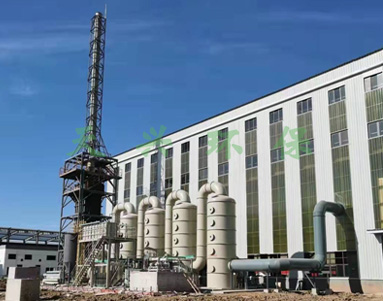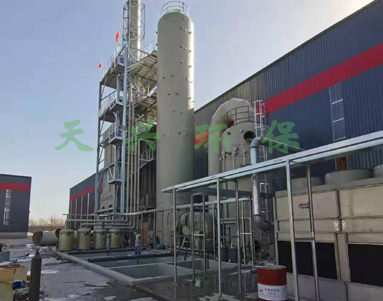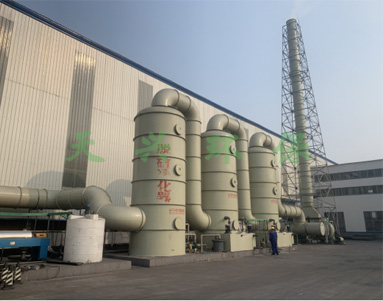Flue gas dedusting, desulfurization, electrostatic dedusting (FOG) ultra-low emission treatment equipment
I. Application and working principle
1. Electrostatic dust (fog) removal is a kind of device used to deal with the trace of dust and micro particles, it is mainly used to remove harmful substances from the wet gas---dust, mist, water droplets, aerosol, odor, and other harmful substances of PM2.5, and it is an ideal equipment for dealing with the atmospheric dust pollution.
2. Between the anode tube and the cathode line of an electrostatic precipitator (fog), a direct current high voltage is applied between the anode and the cathode, the gas between the anode and the cathode is fully ionized in a strong electric field, which makes positive and negative ions full of the dust collector dust, the particles along with the fog will make collisions with the positive and negative ions, the charged dust particles moves to the anode and the cathode respectively due to high voltage electrostatic Coulomb force, they will release electric charge when arriving at the poles, the dust (fog) particles attach to the anode tube and the cathode line due to its inherent
viscosity, and then we will clean them by washing with water.
II. The characteristics of structure and performance
Electrostatic dust (fog) removal is mainly composed of a shell, an anode, a cathode device, an insulating device, a washing system and a high pressure unit.
III. The process performance
Electrostatic dust (fog) removal has the advantages of high dust removal efficiency, low pressure loss, simple operation, low energy consumption, no moving parts and no secondary dust, low maintenance costs, short production downtime period, still working below the dew point of the flue gas temperature, in combination with other flue gas treatment equipment due to its compact structure, design form diversification and other advantages.
IV. Application field
Thermal power, steel, metallurgy, cement, sulfuric acid, titanium dioxide, glass, ceramics, rare earth industry etc.




